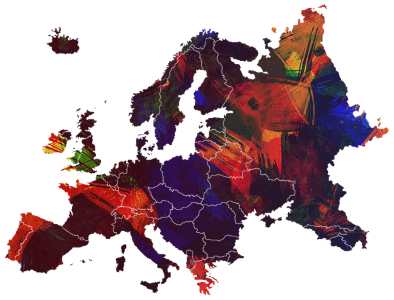The continent of Europe is home to an astounding variety of languages, most belonging to the Indo-European language family. However, some Europeans and communities across Europe speak non-Indo-European tongues with rich histories and cultural significance. This article investigates these non-Indo-European languages as well as their roots and current use.
Basque (Euskara)
Region: Northern Spain and Southwestern France
Speakers: Approximately 750,000
Basque, also known as Euskara, is an isolated language; that is, it has no known relatives among other languages. As one of Europe’s oldest tongues with roots predating Indo-European arrival, Euskara remains co-official alongside Spanish in Spain’s Basque Autonomous Community and Navarre.
Unique Features:
- Ergative-absolutive grammar: Unlike most European languages, Basque uses an ergative-absolutive system.
- Rich oral tradition: The Basque culture has a strong tradition of oral literature, including bertsolaritza (improvised poetic contests).
Hungarian (Magyar)
Region: Hungary and surrounding countries
Speakers: Approximately 13 million
Hungarian is part of the Uralic language family, which also includes Finnish and Estonian. It is the official language of Hungary and is also spoken by Hungarian communities in neighboring countries such as Romania, Slovakia, Serbia, and Ukraine.
Unique Features:
- Agglutinative language: Hungarian uses suffixes extensively to convey grammatical relationships and meanings.
- Vowel harmony: Vowels within a word harmonize to be either front or back vowels.
Finnish (Suomi)
Region: Finland
Speakers: Approximately 5.4 million
Finnish, like Hungarian, belongs to the Uralic language family. It is the official language of Finland, alongside Swedish, and has a significant community of speakers in Sweden and Russia.
Unique Features:
- Agglutinative structure: Finnish relies heavily on suffixes to modify word meanings and indicate grammatical functions.
- Complex case system: Finnish has 15 grammatical cases, each indicating different functions like location, direction, and possession.
Estonian (Eesti)
Region: Estonia
Speakers: Approximately 1.1 million
Estonian is another Uralic language, closely related to Finnish. It is the official language of Estonia and has similarities with Finnish, although the two are not mutually intelligible.
Unique Features:
- Vowel harmony: Similar to Finnish and Hungarian, Estonian employs vowel harmony.
- Three degrees of phonemic length: Estonian words can have short, long, and overlong vowels and consonants, which can change the meaning of words.
Maltese (Malti)
Region: Malta
Speakers: Approximately 520,000
Maltese is the only Semitic language that is an official language of the European Union. It evolved from Siculo-Arabic, the Arabic dialect that developed in Sicily and Malta between the 9th and 12th centuries. Maltese has incorporated many loanwords from Italian, Sicilian, and English.
Unique Features:
- Latin script: Maltese is written in the Latin alphabet, unlike other Semitic languages that use Arabic script.
- Extensive borrowing: The language has a significant number of loanwords, especially from Italian and English, due to Malta’s historical connections.
Sami Languages
Region: Northern Norway, Sweden, Finland, and Russia
Speakers: Approximately 30,000
The Sami languages belong to the Uralic family and are spoken by the Sami people in the northern parts of Scandinavia and the Kola Peninsula in Russia. There are several Sami languages, with Northern Sami being the most widely spoken.
Unique Features:
- Rich oral tradition: Sami culture includes a wealth of oral literature, such as joik (traditional singing).
- Multilingualism: Many Sami speakers are multilingual, often fluent in the national languages of their respective countries.
Conclusion
Non-Indo-European languages in Europe highlight its rich linguistic tapestry and historical interactions that have shaped its cultures. From Basque’s ancient roots, through Uralic influences in Finnish, Hungarian and Estonian and Semitic roots in Maltese; all non-Indo-European languages provide fascinating glimpses into Europe’s diversity which enable us to fully appreciate its vast linguistic and cultural depth. Engaging in exploration and preservation initiatives allows us to fully appreciate it!



